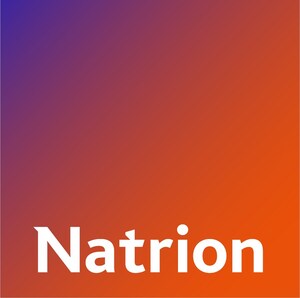EV Battery Component Maker Natrion Gets Closer to Solid-State Reality with High-Performance, Heat-Stable Multilayer Pouch Cells
Unveils proprietary new lithium-metal anode
CHAMPAIGN, Ill., Jan. 4, 2023 /PRNewswire/ -- Natrion, a pioneer in electric vehicle battery technology, today revealed several major developments that set the company apart as a solid-state battery leader. They include achieving high cyclability for graphite anode Li-ion pouch cells; successfully creating high-performance, multi-layer Li-metal pouch cells that function without the use of external stack pressure; and developing a new Li-metal anode material that is cheaper and more efficient. Together, these promising developments heighten Natrion's trajectory and pave the way for commercial viability of solid-state EV batteries.
As an update on its single-layer solid-state graphite anode-using Li-ion battery pouch cells initially unveiled in September, Natrion has announced that these cells have achieved over 500 cycles with virtually no loss of capacity.
The data demonstrates high capacity and coulombic efficiency retention through the use of the company's LISIC278 solid-state electrolyte product. The company attributes the high cyclability of graphite anode-using cells constructed with LISIC278 to the material's ability to mitigate electrode cross-talk and other degradation mechanisms.
The company is also sharing data for its two-layer graphite and lithium-metal cells, a form factor which provides a realistic indicator of the cell's performance in an EV battery pack application.
- Realistic Duty Cycle: Graphite anode cell results were produced at C/3 rate (3 hour charge and discharge) while Lithium-metal cell results were produced at C/2 (2 hour charge and discharge). These C-rates are representative of what would be encountered in an EV use case.
- Long Lifespan: Natrion's two-layer Li-metal cell showed >99.9% average coulombic efficiency. Other battery companies that have accomplished similar performance have done so while using excessive stack pressure, elevated temperatures, slower charging rates, or a combination of these.
- Greater Driving Range: Natrion's 2-layer lithium-metal cells formulated with the company's LISIC331 solid-state electrolyte and M3 additive showed 50.7% greater energy density versus their 2-layer graphite anode-using cells (526 Wh/L and 349 Wh/L, respectively). Moreover, swapping traditional Li-ion batteries in an EV battery pack with Natrion's solid-state Li-metal design could allow an EV to drive 50% further on a single charge.
- Enhanced Thermal Safety: A Natrion two-layer Li-metal pouch cell was charged to nearly 100% state-of-charge before being subjected to heating to 110°C. The cell voltage and self-heating rate remained stable through the whole test. This indicates that Natrion's cell design is stable to at least 110°C when traditional Li-ion battery cells can suffer thermal runaway at temperatures as low as 60°C.
Importantly, all of Natrion's cell cycle life results were achieved at ambient pressure — without the use of any additional external stack pressure on the outside of the cell. While other battery companies have sought to introduce multi-layer cells, all known instances have typically been achieved while applying as much as 350psi of pressure on the cell. Such high pressures require cells to be enclosed in clamping devices, making them highly incompatible with current battery pack design and adding unnecessary additional mass and volume. Few if any have been able to demonstrate cells that perform well without pressurized conditions, as Natrion has today.
Moreover, the results for 2-layer graphite and lithium cells were consistent with their corresponding results for single-layer cells and demonstrated no loss of efficiency even for the added layer. This indicates that Natrion's materials are scalable and feasible for real-life EV battery pack applications (which require multi-layer cells), without compromising performance or efficiency.
"We are very encouraged by these results," said Natrion co-founder and CEO Alex Kosyakov. "To our knowledge, no other battery company has been able to demonstrate these charging rates and efficiencies at the multi-layer level for lithium-metal, especially without stack pressure. We believe that down the road this is going to make our technology much easier to build EV battery packs with. Combined with the thermal stability that we have demonstrated we believe that we have an innovation that is uniquely positioned in the market."
Successfully developing viable multi-layer pouch cells — without the use of external stack pressure — was in part due to a new invention that Natrion created specifically to deliver better performance.
Natrion's newest invention is a lithium-metal anode that uses a specially engineered substrate capable of reducing costs while increasing performance. Initially developed in fulfillment of a US Department of Defense contract, X-12 was designed to complement Natrion's other proprietary materials — LISIC, its solid-state electrolyte separator, and M3, its electrolyte additive — to extract higher efficiency out of cells and not require stack pressure. In a controlled experiment, Natrion found that between two otherwise identical cells, the one with the X-12 anode showed significantly higher cycle stability and discharge capacity.
The material is also meant to keep growing battery costs down. "This is our way of trying to make lithium-metal anodes more commercially viable by finding an alternative to expensive copper foil. Copper is usually the go-to material for a Li-metal anode backing or substrate, but the metal's costs keep going up and up," added Kosyakov.
- Higher surface area surface morphology which effectively increases energy capacity at high charge rates and mitigates failure mechanisms like lithium dendrites
- Made with a carbon-based substrate that is significantly less dense than copper, reducing overall mass and improving specific energy
- The copper-free carbon substrate is also a more affordable and predictably priced material
With the addition of X-12, Natrion boasts a growing number of patented innovations, and plans to unveil additional inventions in 2023.
Taken together, all of these milestones highlight Natrion's emergence as a frontrunner in the EV battery technology space, as well as signal growing viability for the commercialization of lithium-metal batteries.
Natrion is an EV battery pioneer helping enable mass-market EV adoption by making fire-safe, high-performance and manufacturer-friendly battery components. Founded in 2018 by founders Alex Kosyakov and Thomas Rouffiac, the company participated in Y Combinator S2019, in NYU Stern's Endless Frontiers Lab, and was a winner of the 2021 MassChallenge Boston. It has been backed by investors including Mark Cuban, TechNexus Venture Collaborative, and Tamarack Global, and has received multiple grants from the U.S. Department of Defense. The company is headquartered in Binghamton, New York with operations in Champaign, Illinois.
SOURCE Natrion

WANT YOUR COMPANY'S NEWS FEATURED ON PRNEWSWIRE.COM?
Newsrooms &
Influencers
Digital Media
Outlets
Journalists
Opted In






Share this article